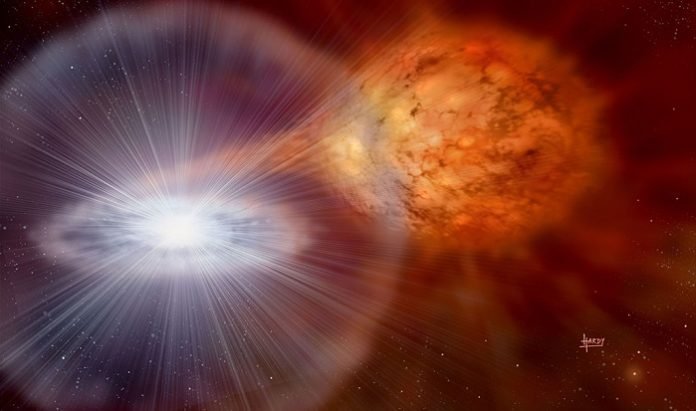
Did you know that scientists are now able to recreate massive stellar explosions, known as classical novae, in laboratories on Earth?
These explosions play a crucial role in the creation of atoms that make up our bodies and the visible matter in the universe.
Researchers at Michigan State University (MSU) are studying rare isotopes, which are like the DNA of exploding stars, to understand these cosmic events better.
In this article, we will explore how scientists investigate rare isotopes and their significance in unraveling the mysteries of our universe.
Stellar explosions, such as classical novae, have fascinated astronomers for centuries. However, observing them from afar through telescopes only provides a limited view.
To gain deeper insights, scientists at MSU’s National Superconducting Cyclotron Laboratory (NSCL) and the upcoming Facility for Rare Isotope Beams (FRIB) are studying rare isotopes in laboratories.
Christopher Wrede, an assistant professor of physics at NSCL, describes rare isotopes as the DNA of exploding stars.
By investigating these exotic nuclei, researchers can measure the nuclear properties that drive stellar explosions and synthesize the chemical elements essential for the models used by astrophysicists and astronomers.
Rare isotopes play a crucial role in understanding how stars processed hydrogen and helium gas from the Big Bang into the elements that form planets and life.
By conducting experiments with rare isotope beams, scientists can uncover the detailed nuclear physics information necessary to comprehend our origins.
In a recent experiment, Wrede’s team studied the production of aluminum-26, a radioactive isotope present in the Milky Way.
By determining the nuclear-reaction rate affecting its production in classical novae, they discovered that up to 30 percent could be produced in these explosions, with the remaining portion originating from other sources like supernovae.
This research provides insights into how aluminum-26 could have influenced the amount of water on Earth.
To explore more extreme astrophysical events, scientists are continuously improving their technology and techniques. FRIB, currently under construction at MSU, will revolutionize their capabilities.
By creating beams of radioactive ions like aluminum and using them to study nuclear reactions, scientists will gain a deeper understanding of the processes occurring in exploding stars.
FRIB, set to become a scientific user facility, aims to unlock the properties of rare isotopes, advancing our knowledge of nuclei, nuclear astrophysics, and fundamental interactions.
This research has broad applications, including medicine, homeland security, and industry. Expected to be completed in 2022, FRIB will empower scientists to make groundbreaking discoveries and better comprehend the mysteries of our universe.
The study of rare isotopes is enabling scientists to delve into the inner workings of exploding stars and uncover the secrets of our universe’s origins.
By recreating stellar explosions in laboratories and investigating nuclear reactions, researchers are expanding our understanding of the cosmic events that shape our world.
With ongoing advancements in technology and the upcoming FRIB facility, the future holds even more exciting discoveries. Prepare to be amazed as we continue our quest to unravel the wonders of the cosmos.



